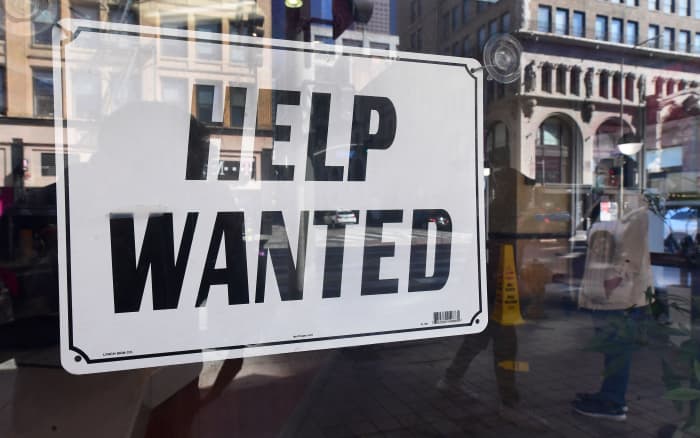The numbers: The increase in new jobs in September slowed to a 17-month low of 263,000 due to labor shortages and waning demand for new workers as talk of recession grows. But it was still too strong for a Federal Reserve bent on slowing the economy and tackling high inflation.
The increase in hiring, while still strong historically, was the smallest since April 2021.
It also fell slightly short of Wall Street estimates. Economists polled by The Wall Street Journal had forecast 275,000 new jobs.
The unemployment rate, meanwhile, dropped to 3.5% from 3.7%, the government said Friday. That puts it back at a pre-pandemic low and marks one of the lowest rates since the late 1960s.
Yet the slowdown in hiring is not taking place fast enough to deter the Fed from rapidly raising interest rates to try to quench the worst outbreak of inflation in 40 years. Higher rates are expected to reduce economic growth and raise unemployment.

There’s still lots of “help wanted” signs, but companies aren’t hiring as many people as they were earlier in the year.
frederic j. brown/Agence France-Presse/Getty Images
Many economists even predict a recession will take place next year and Fed officials won’t rule one out.
“My answer is I hope so. We are going to try [to avoid a recession],” Minneapolis Federal Reserve President Neel Kashkari said on Thursday. “But we have to bring inflation down.”
U.S. stocks sank in premarket trades after the report. Economists said the Fed would not assuaged that the labor market is cooling off sufficiently to reduce the upward pressure on inflation.
“There’s no evidence to suggest the Fed should reduce the pace of rate hikes,” said senior economist Sam Bullard of Wells Fargo.
One of the Fed’s big worries is rising wages spurred on by the tightest labor market in modern times. Higher wages could feed into inflation and make it harder to rein in.
Hourly pay rose 10 cents in September to $ 32.46. The rise in pay over the past year slowed to 5% from 5.2%, but it’s still one of the fastest increases since the early 1980s.
The Fed is expected to keep raising rates until inflation starts to fall rapidly and the mismatch between too few workers and too many open jobs eases up.
The September employment report showed little progress on that front. The so-called participation rate — the share of working-age people in the labor force — fell a tick to 62.3%.
Yet other reports in recent days suggest hiring is tapering off.
Job openings sank to the lowest level since last fall and layoffs, while still quite low, rose to an 18-month high in August. New unemployment filings also rose last week to a five-week high.
Big picture: Just two months ago, the U.S. finally recovered all the 22 million jobs lost during the pandemic. Now it faces a fresh challenge from a weakening economy.
Higher interest rates have already slammed the housing market and pushed mortgage rates to almost 7%. Other industries are starting to feel the impact, too.
Higher rates also discourage consumers from spending by raising the cost of borrowing for big-ticket items such as new cars.
Businesses are getting the hint. Some are already scaling back plans to hire or invest in anticipation that the economy will slow further.
The big question is whether the U.S. plunges into a second recession in four years. Many economists think it’s inevitable.
“The evidence is pretty persuasive that we are heading for a recession,” said Dan North, senior economist at Allianz Trade North America.
Key details: Hotel, restaurants and other companies in the hospitality business created 83,000 new jobs, reflecting strong demand for service such as travel and recreation as Americans get out more.
Hiring also rose sharply in health care and professional businesses. Manufacturers also added 22,000 jobs and construction firms hired 19,000 people.
Employment fell slightly in finance, transportation and government.
Employment gains in August and July were little changed.
Looking ahead: “Job growth will need to downshift much faster in the months ahead,” said senior economist Sal Guatieri of BMO Capital Markets, “before the Fed backs down on its aggressive tightening campaign.”
Market reaction: The Dow Jones Industrial Average DJIA, -1.15% and S&P 500 SPX, -1.02% were set to open sharply lower in Friday trades. The yield on the 10-year Treasury note BX:TMUBMUSD10Y climbed to 3.89%.
